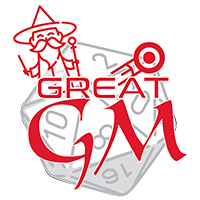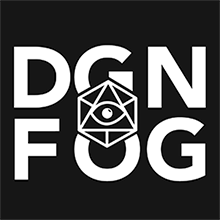Hit Locations, Range, Combat Dice
HIT LOCATIONS
There are 6 body parts that you can target as hit locations: head, torso, left arm, right arm, left leg, and right leg. When you successfully hit an opponent with an attack, you either randomly determine which body part you hit, or hit the body part you chose before you made the test. Use the Hit Locations table for reference.
Creatures With Other Hit Locations
Some creatures in the wasteland may have other body parts—wings, claws, and tails—that do not appear on the hit location table. These locations will be listed in the creature’s statistics, replacing the Hit Locations table with its own.
Hit Locations
- D20 Roll: 1-2 ==> Hit Location: Head
- D20 Roll: 3-8 ==> Hit Location: Torso
- D20 Roll: 9-11 ==> Hit Location: Left Arm
- D20 Roll: 12-14 ==> Hit Location: Right Arm
- D20 Roll: 15-17 ==> Hit Location: Left Leg
- D20 Roll: 18-20 ==> Hit Location: Right Leg
RANGE
Ranged and thrown weapons can be used to attack any target you can see, but they vary in effectiveness depending on how far away the target is from you. Ranged weapons have an ideal range noted in their profile (just listed as Range), which is based on the relative distance between the attacker and the target, using the zones of the combat environment. A weapon’s ideal range is one of the following:
- Close (C): The weapon is most effective against targets within the same zone.
- Medium (M): The weapon is most effective against targets in an adjacent zone.
- Long (L): The weapon is most effective against targets two zones away.
- Extreme (X): The weapon is most effective against targets three or more zones away.
The difficulty of a ranged attack increases by one for each range band outside of the weapon’s ideal range, whether closer or further away—a long sniper’s rifle is deadly at Long ranges, but awkward and unwieldy in close quarters, while a pistol is great at Close range but less useful at longer distances.
Example: A scoped hunting rifle with a Long range will add +1 to the difficulty of its attacks at Medium range or Extreme range, and add +2 to the difficulty of attacks at Close range. A shotgun with a Close range adds +1 to the difficulty of attacks at Medium range, +2 at Long range, and +3 at Extreme range.
Weapon Range Difficulty
- Same Zone: Close ==> Close: 0; Medium: +1; Long: +2; Extreme: +3
- Adjacent Zone: Medium ==> Close: +1; Medium: 0; Long: +1; Extreme: +2
- 2 Zones: Long ==> Close: +2; Medium: +1; Long: 0; Extreme: +1
- 3 Zones: Extreme ==> Close: +3; Medium: +2; Long: +1; Extreme: 0
COMBAT DICE
When your attack hits its target, you inflict an amount of damage determined by the weapon’s damage rating. This damage rating is described as a number of Combat Dice, abbreviated with the CD symbol throughout this rulebook.
Combat Dice are specially-designed six-sided dice, with four different results as shown on the Combat Dice Results table. If you don’t have any Combat Dice, you can simply use normal six-sided dice (d6) and compare the results to the table below.
When you hit, roll all the CD for the attack together as a single dice pool, and total up the result. This total is the amount of damage you inflict on your target. In addition, any effect symbols (the face showing the CD symbol) activates special abilities—called damage effects—listed for the weapon.
Combat Dice Results
- D6 Roll: 1 ==> 1 Damage
- D6 Roll: 2 ==> 2 Damage
- D6 Roll: 3-4 ==> Nothing/No effect
- D6 Roll: 5-6 ==> 1 Damage + Damage Effects Trigger
Example: The laser gun has a damage rating of 4CD with the Piercing 1 damage effect. When the Sole Survivor hits with their laser gun, their player rolls 4 Combat Dice and totals up the result. They roll a 1, 1, 3, and a 5, inflicting 3 damage and ignoring 1 DR of their opponent’s armor.
Ranged Attacks Within Reach
Being in reach of an enemy is disruptive to ranged attacks and tests, adding +2 to the difficulty of any test that isn’t a melee attack.
Sneak Attacks
If the enemy is unaware of you before you attack, the difficulty to attack them is reduced by 1 (to a minimum of 0), and your attack gains the Vicious damage effect if it did not have it already, or the damage is increased by +2CD if it already has the Vicious damage effect.
If the difficulty to hit your opponent is 0, you do not need to roll to hit them, but you may still decide to do so, generating Action Points and complications as normal.
Increasing Damage
You can increase the number of Combat Dice you roll to inflict damage with an attack by spending Action Points or ammunition, depending on the type of weapon you are using.
For melee weapons (including unarmed attacks) and thrown weapons, each Action Point (AP) you spend adds +1CD to roll in your damage dice pool. You can spend up to 3 AP to increase your dice pool by up to +3CD . You can only spend AP you have saved in the group pool or generated with your attack: you cannot generate AP for the gamemaster to use this AP option.
For ranged weapons, each unit of ammunition you spend adds +1CD to roll in your damage dice pool. You can spend ammunition up to the gun’s fire rate. For example, a 10mm pistol has a fire rate of 2, so you can spend 2 additional 10mm bullets to increase the Combat Dice pool. An Institute laser rifle has a fire rate of 3, so you can spend up to 3 charges from a fusion cell to increase its Combat Dice pool.
Remove these ads. Join the Worldbuilders Guild









Comments